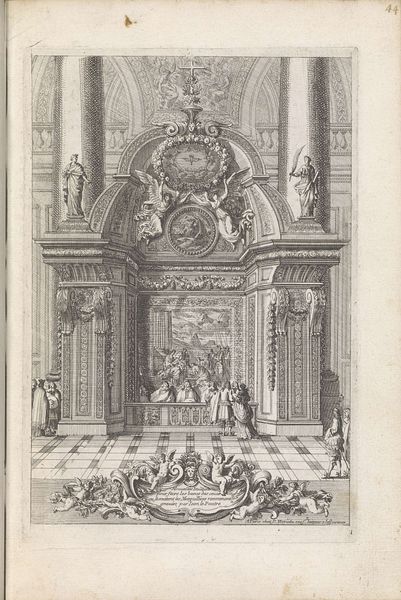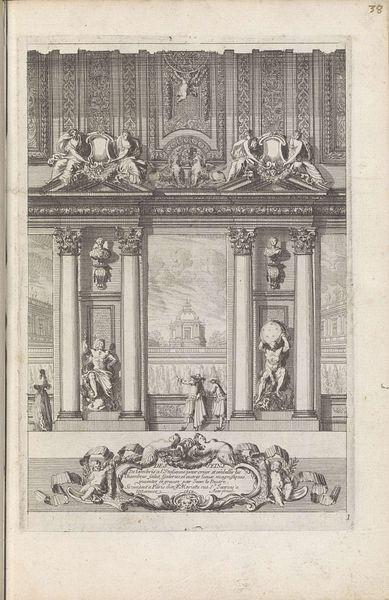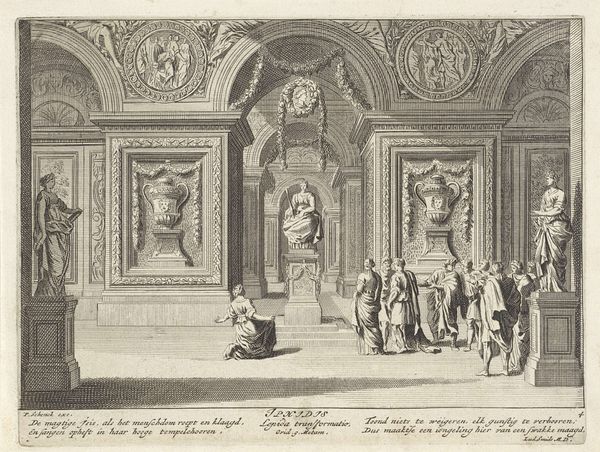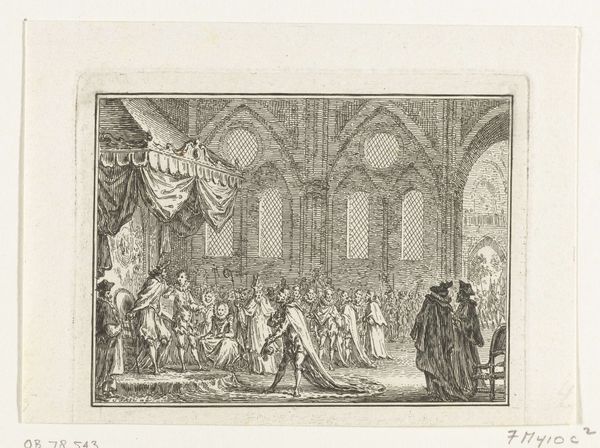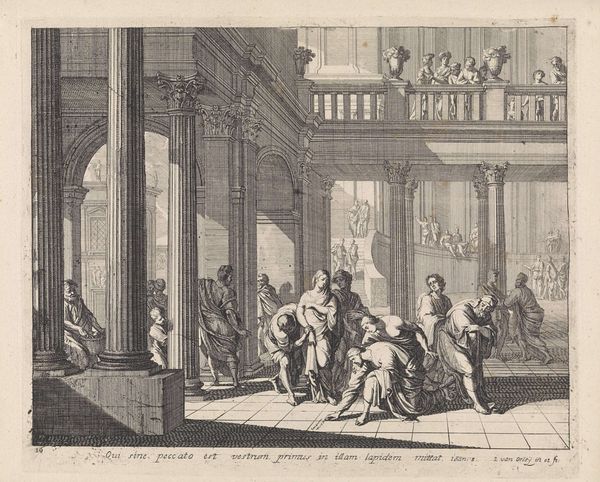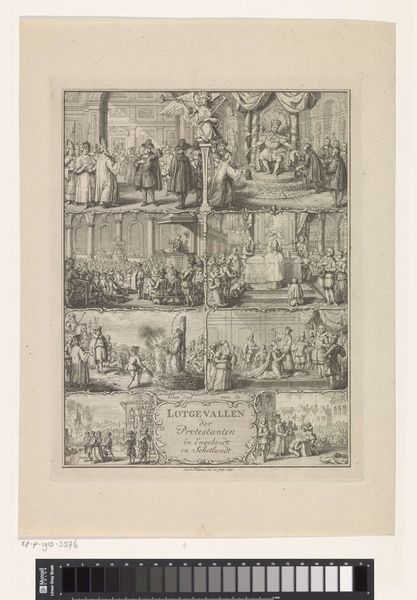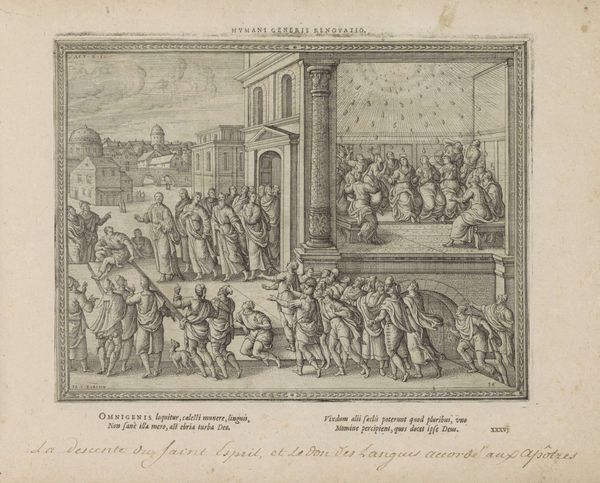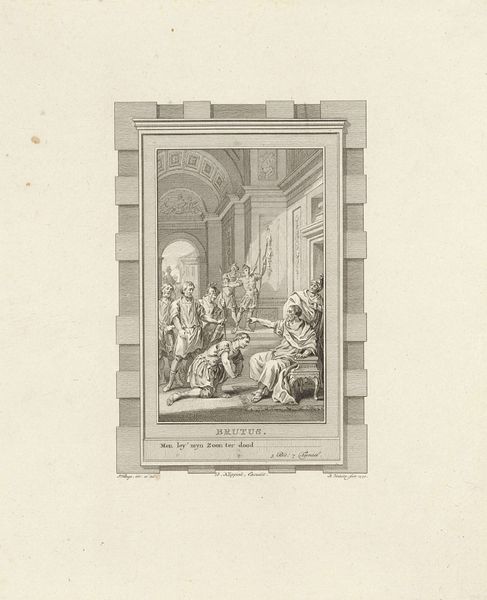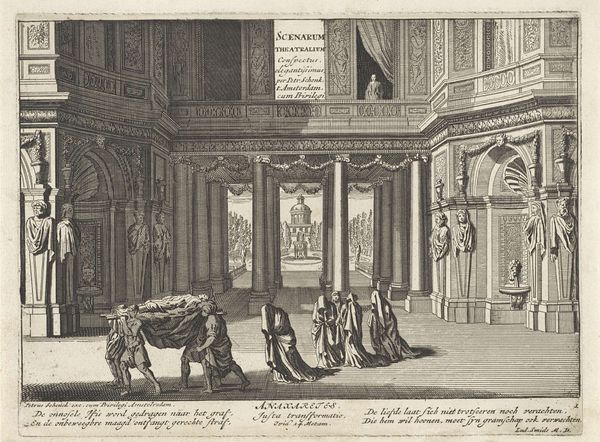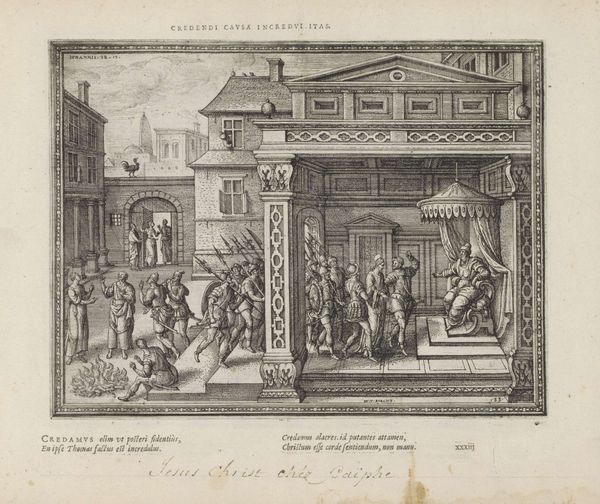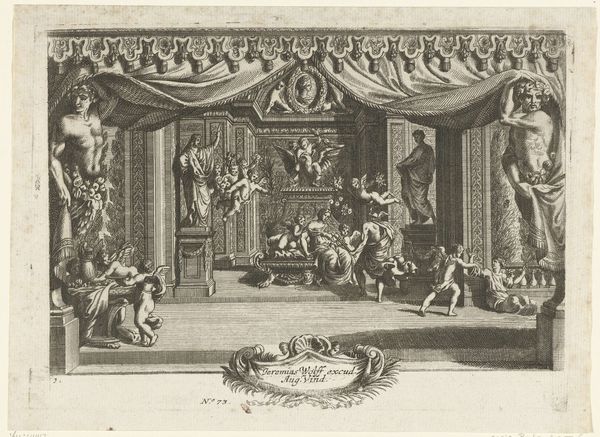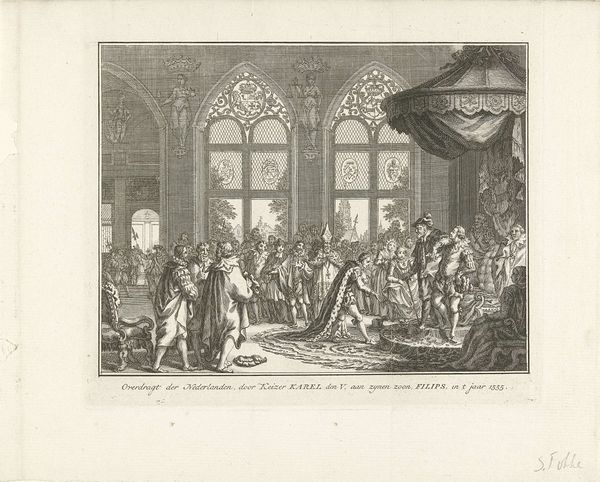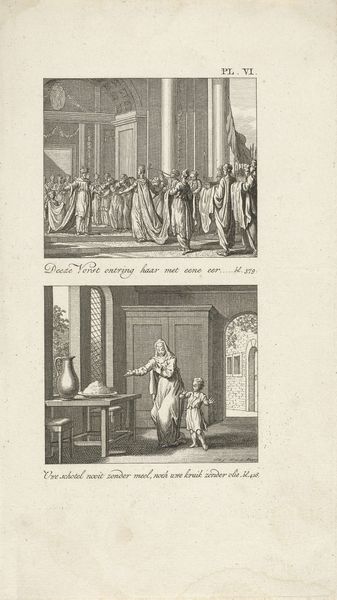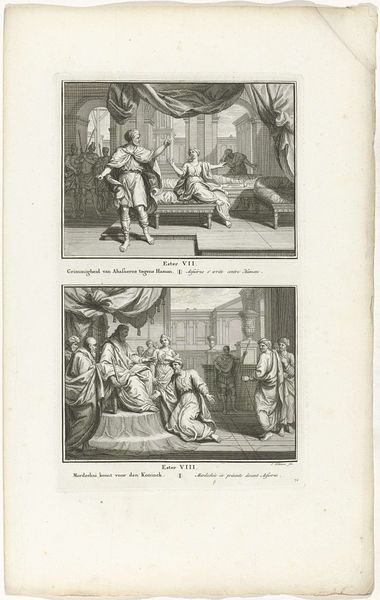
Toediening van het vormsel in de kerk op het Begijnhof te Amsterdam, 1792 1792
0:00
0:00
print, engraving
#
neoclacissism
# print
#
genre-painting
#
history-painting
#
engraving
Dimensions: height 129 mm, width 140 mm
Copyright: Rijks Museum: Open Domain
Curator: Well, hello there. We're standing before an engraving by Cornelis Brouwer titled "Toediening van het vormsel in de kerk op het Begijnhof te Amsterdam, 1792"—The Administration of the Sacrament of Confirmation in the Church at the Begijnhof in Amsterdam, from 1792, to put it in simpler words. Editor: Oh, what a busy little scene! It feels so formal, almost austere, even though there's clearly a lot of activity. A stillness imposed through precision, maybe. Curator: Exactly! Brouwer captured a genre painting within an architectural scene. It's the sacrament of confirmation happening in Begijnhof, the architecture giving that Neoclassical sobriety… So typical of the time, really. The composition uses verticals to frame the crowded central action. The strong verticality, combined with linear strokes of the engraving… a very intentional style that's both visually appealing and structurally significant, socially and historically significant as well. Editor: I see it as something more politically resonant, too. Begijnhof was historically a space for unmarried or widowed women to live semi-independently within the Catholic tradition. Consider how Brouwer renders them within this public, patriarchal ritual of confirmation—how are these women positioned? Do they have agency, are they coerced? Even their presence subtly shifts this work from simple documentation towards something questioning how gender, religion, and social structures were performing. Curator: Interesting perspective. The rigidity perhaps suggests a visual reinforcement of the societal norms in Amsterdam. A society then quite preoccupied with maintaining a sense of order amid political unrest brewing throughout Europe... the eve of revolutions if you want to consider what’s next! It all translates visually into these meticulous lines and orderly arrangements, a very restrained, and precise composition for what I find otherwise an intimate spiritual gathering. Editor: Precisely—that controlled intimacy highlights those power dynamics. And it shows how religious rites are so much more than purely spiritual; they’re intensely human arenas where social roles are not just affirmed, but can be subtly, perhaps even unconsciously, contested. Curator: Mmm, definitely offers plenty to reflect on— from the religious to political considerations of late 18th century Amsterdam. Thanks for expanding on it. Editor: My pleasure. Looking closely always enriches our understanding.
Comments
No comments
Be the first to comment and join the conversation on the ultimate creative platform.
